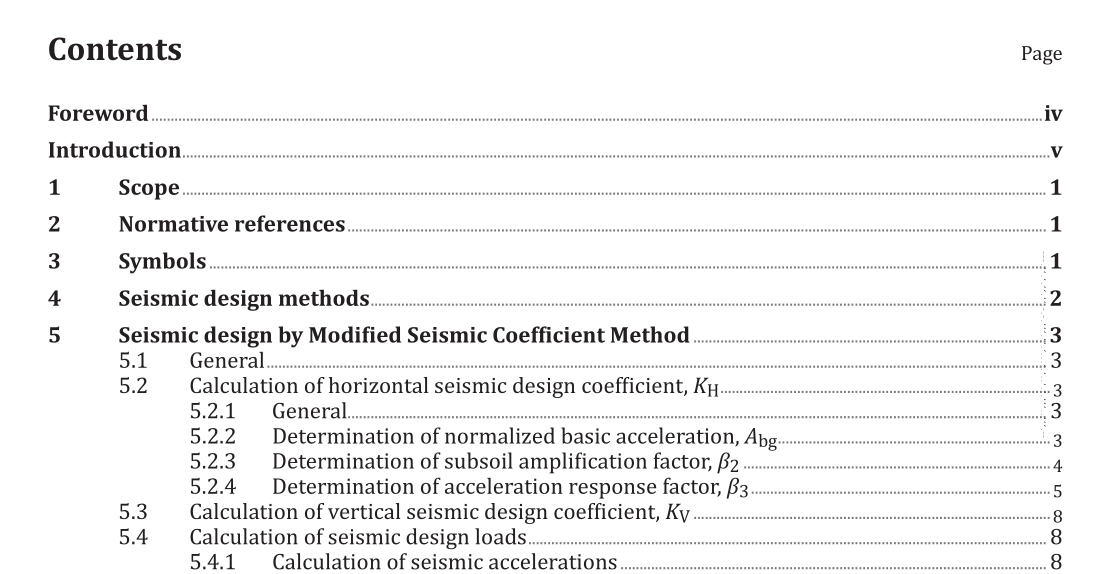ISO 11031:2016 pdf download.Cranes — Principles for seismically resistant design
1 Scope
This International Standard establishes general methods for calculating seismic loads to be used as defined in the ISO 8686 series and for proof of competence as defined in ISO 20332, for the structure and mechanical components of cranes as defined in ISO 4306. This International Standard evaluates dynamic response behaviour of a crane subjected to seismic excitation as a function of the dynamic characteristics of the crane and of its supporting structure. The evaluation takes into account dynamic effects both of regional seismic conditions and of the local conditions on the surface of the ground at the crane location. The operational conditions of the crane and the risks resulting from seismic damage to the crane are also taken into account. This International Standard is restricted to the serviceability limit state (SLS), maintaining stresses within the elastic range in accordance with ISO 20332. The present edition does not extend to proofs of competence which include plastic deformations. When these are permitted by agreement between crane supplier and customer, other standards or relevant literature taking them into account can be used.
2 Normative references
The following documents, in whole or in part, are normatively referenced in this document and are indispensable for its application. For dated references, only the edition cited applies. For undated references, the latest edition of the referenced document (including any amendments) applies.
ISO 4306 (all parts), Lifting appliances — Vocabulary
ISO 8686 (all parts), Cranes — Design principles for loads and load combinations
ISO 20332, Cranes — Proof of competence of steel structures
3 Symbols
The main symbols used in this International Standard are given in Table 1.
4 Seismic design methods
There are three main methods of seismic response analysis used in seismic design:
— Modified Seismic Coefficient Method;
— Maximum Response Spectrum Method;
— Time History Response Method.
In the Modified Seismic Coefficient Method, the applied quasi-static seismic forces are calculated as a product of seismic coefficients and crane weights. The evaluation of seismic coefficients takes into account crane location, its seismic characteristics, basic dynamic characteristics of the crane, i.e. natural frequency or period and damping characteristics, in three principal orthogonal directions of the crane (one vertical and two horizontal). The method is the basis of this International Standard on account of its simplicity (see Clause 5) and its procedure is executed as part of the design iterative process indicated in the flow chart in Annex A.
The Maximum Response Spectrum Method (see Clause 6) is an alternative method of seismic response analysis used where:
— more accurate seismic response of the crane is required than that produced by the Modified Seismic Coefficient Method;
— demand on significant computational resources is economically acceptable.
Its application is limited only to linear systems and to system where nonlinearities if present can be neglected.
ISO 11031:2016 pdf download
